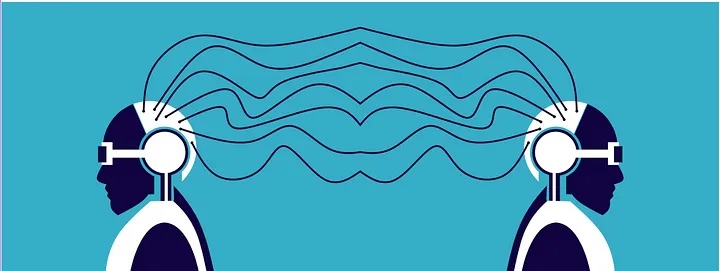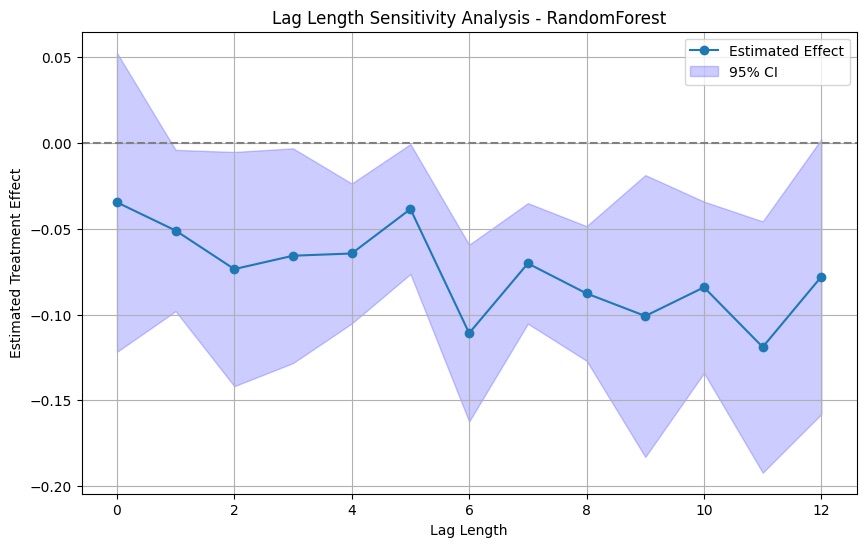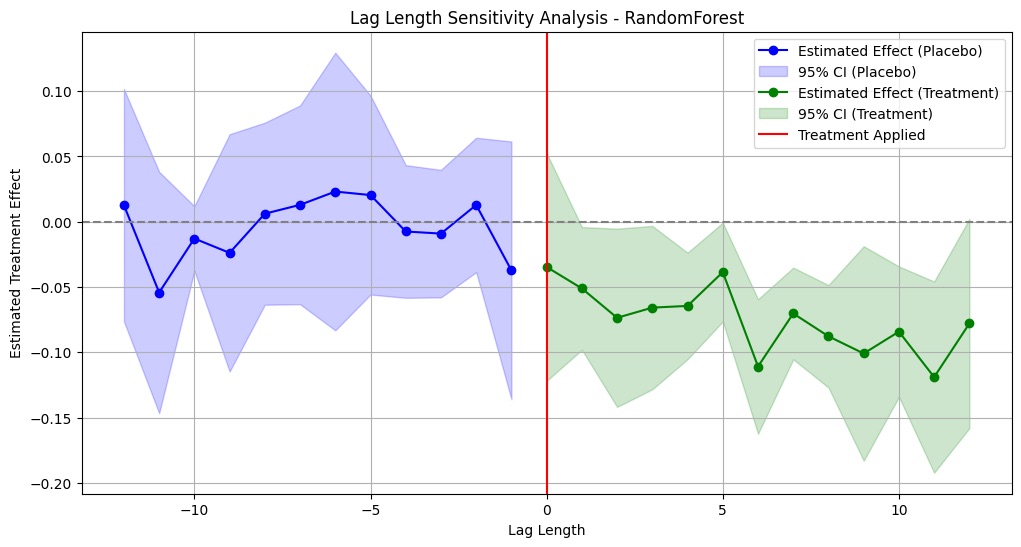Double Machine Learning for Panel Data: Exploring How Peace Agreements Impact Violence Levels

During my master’s program, a colleague and I decided to take on the challenge of measuring the true effect of peace agreements on violence. To do this, we used Double Machine Learning (DML) — a method that uses machine learning to improve accuracy when estimating cause-and-effect relationships in data. Our challenge was adapting DML to work with observational panel data. For a more detailed look at the project, check out my Medium article! 🚀
In the article I describe exactly how we overcame this challenge all while uncovering the true causal effect of peace agreements on violence. Below, you can see visualizations of our findings, including the effects of peace agreements across time lags and the results of placebo tests to validate the robustness of our analysis.
Check out my GitHub repo for the full code and feel free to explore how we put it all together.
1. Lagged Treatment Effects
This chart shows the estimated treatment effects of peace agreements over multiple months following their implementation. The negative coefficients below the zero line indicate a consistent reduction in violence over time.

2. Placebo Test Results
This side-by-side comparison shows that placebo treatments (left) produce no significant effects, while actual treatments (right) consistently reduce violence. The results confirm the reliability of our findings.
